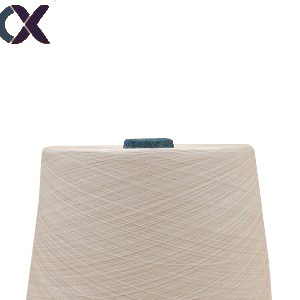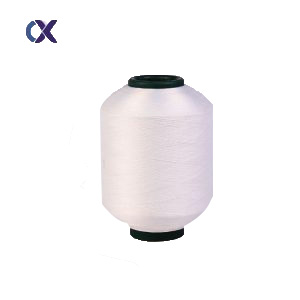- Chinese
- French
- German
- Portuguese
- Spanish
- Russian
- Japanese
- Korean
- Arabic
- Irish
- Greek
- Turkish
- Italian
- Danish
- Romanian
- Indonesian
- Czech
- Afrikaans
- Swedish
- Polish
- Basque
- Catalan
- Esperanto
- Hindi
- Lao
- Albanian
- Amharic
- Armenian
- Azerbaijani
- Belarusian
- Bengali
- Bosnian
- Bulgarian
- Cebuano
- Chichewa
- Corsican
- Croatian
- Dutch
- Estonian
- Filipino
- Finnish
- Frisian
- Galician
- Georgian
- Gujarati
- Haitian
- Hausa
- Hawaiian
- Hebrew
- Hmong
- Hungarian
- Icelandic
- Igbo
- Javanese
- Kannada
- Kazakh
- Khmer
- Kurdish
- Kyrgyz
- Latin
- Latvian
- Lithuanian
- Luxembou..
- Macedonian
- Malagasy
- Malay
- Malayalam
- Maltese
- Maori
- Marathi
- Mongolian
- Burmese
- Nepali
- Norwegian
- Pashto
- Persian
- Punjabi
- Serbian
- Sesotho
- Sinhala
- Slovak
- Slovenian
- Somali
- Samoan
- Scots Gaelic
- Shona
- Sindhi
- Sundanese
- Swahili
- Tajik
- Tamil
- Telugu
- Thai
- Ukrainian
- Urdu
- Uzbek
- Vietnamese
- Welsh
- Xhosa
- Yiddish
- Yoruba
- Zulu
- Kinyarwanda
- Tatar
- Oriya
- Turkmen
- Uyghur

Blogs
- dding, enhancing the comfort and functionality of products.
(III) Special Functional Yarn
- Biodegradable Yarn: With the increasing awareness of environmental protection, biodegradable yarn has become a research hotspot. It is made from natural biodegradable materials such as polylactic acid (PLA), polyhydroxyalkanoate (PHA), or natural fibers, and can be decomposed into harmless substances by microorganisms in the natural environment. Biodegradable yarn is used to make disposable medical supplies, environmental protection packaging materials, and clothing, helping to reduce plastic pollution and promoting the sustainable development of the textile industry.
- Luminous Yarn: By adding fluorescent agents, phosphorescent materials, or using photoluminescence technology in the yarn, it can emit light after being illuminated. Luminous yarn is often used in decorative fabrics, stage costumes, safety signs, etc. It not only has a unique visual effect but also plays a warning role in dark environments.
III. Production Processes of Functional Yarn
The production processes of functional yarn are complex and diverse, mainly including the following methods:
- Fiber Modification Method: Fibers are modified by chemical or physical methods to make them inherently functional. For example, antibacterial groups are introduced into the fiber molecular structure through chemical means such as copolymerization and grafting; or physical stretching, heat treatment, and other methods are used to change the crystal structure and orientation of the fibers, improving the strength, elasticity, and other properties of the fibers while endowing them with functionality.
- Blended Spinning Method: Functional additives are mixed with spinning raw materials and then spun, so that the functional components are evenly distributed in the yarn. For example, nano – titanium dioxide particles are mixed into polyester chips to make UV – resistant polyester yarn; phase – change materials are mixed with polymers for spinning to prepare intelligent temperature – regulating yarn.
- Post – Treatment Method: Functional finishing is carried out on the formed yarn or fabric. Functional finishing agents are attached to the surface of the yarn or penetrate into the fibers through processes such as coating, impregnation, and cross – linking. For example, a waterproof and breathable film is coated on the surface of the yarn through the coating process to give the yarn waterproof and breathable functions; the antibacterial agent is immersed into the yarn by the impregnation method to achieve antibacterial effects.
IV. Application Fields of Functional Yarn
(I) Clothing Industry
In the clothing industry, functional yarn is widely used. Sportswear often uses waterproof, breathable, and sweat – wicking yarns to enhance the comfort and performance of athletes during exercise. Antibacterial and deodorizing yarns are used to make underwear and socks to keep the body dry and clean and prevent skin diseases. Intelligent temperature – regulating yarns are applied to high – end outdoor clothing, allowing wearers to maintain a comfortable body temperature in extreme weather conditions.
(II) Medical Field
Functional yarn plays an important role in the medical field. Biodegradable yarn is used to make surgical sutures, which can degrade spontaneously after the wound heals, eliminating the need for suture removal, reducing patient pain and the risk of infection. Antibacterial yarns are used to make medical bandages, surgical gowns, hospital bed sheets, etc., reducing the incidence of hospital – acquired infections. Conductive yarns can be used to make physiological signal monitoring clothing, which can real – time monitor patients’ physiological indicators such as heart rate and blood pressure, providing data support for medical diagnosis and care.
(III) Industrial Application Field
In industrial textiles, functional yarn is also indispensable. In the aerospace field, high – strength, lightweight yarns with special protective functions are used to manufacture structural components of aircraft, parachutes, etc. The automotive industry uses sound – insulating, heat – insulating, and flame – retardant functional yarns to make automotive interiors, improving driving comfort and safety. In the construction field, waterproof, mildew – proof, and crack – resistant yarns are used to enhance the performance of building materials and extend the service life of buildings.
V. Development Trends of Functional Yarn
In the future, functional yarn will develop towards intelligence, greenness, and multi – functional compounding. With the development of technologies such as the Internet of Things and big data, the combination of functional yarn and smart devices will be closer, enabling real – time monitoring and feedback of human health and environmental parameters. At the same time, as consumers pay more and more attention to environmental protection, green functional yarns that are biodegradable and recyclable will become the mainstream of the market. In addition, the combination of multiple functions will be an important development direction of functional yarn. For example, yarns with antibacterial, waterproof and breathable, and intelligent temperature – regulating functions at the same time will meet the increasingly diverse needs of consumers.
Previous News
Crochet Yarn: Art and Warmth at Your FingertipsNext News
Chenille Yarn Process: The Journey of Creating ...Share:
Feature Product
-
 Wool yarn
Wool yarn1.Product Introduction Wool yarn, often also kn...
-
 Viscose yarn
Viscose yarn1.Product Introduction Viscose yarn is a popula...
-
 Spandex Yarn
Spandex Yarn1.Product Introduction Elastane, another name f...
